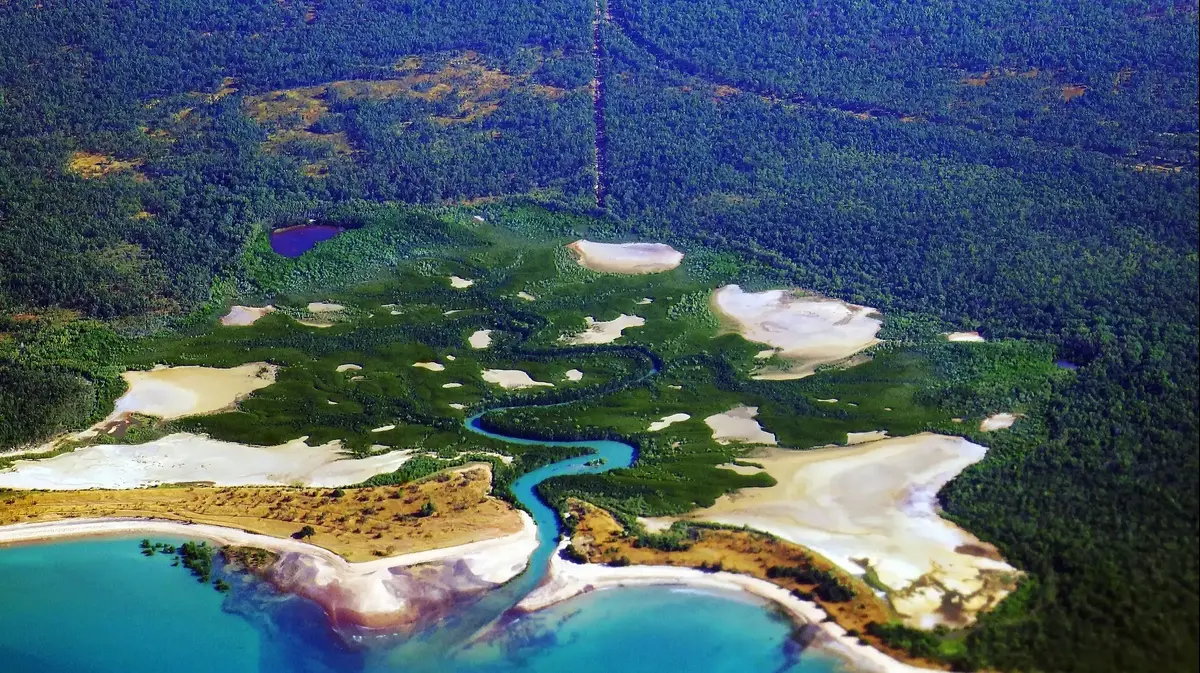The 20 best pictures of Earth from the International Space Station in 2020/NASA JOHNSON
Has a giant underwater continent been hiding off the north coast of Australia for 70,000 years?
A new study published in Quaternary Science Reviews claims that a vast area of land that could house half a million people has been hidden for years at a depth of 100 meters below sea level.
The underwater territory of about 390,000 square kilometers was so large that it could have functioned as a passage from present-day Indonesia to Australia.
The Australian "Atlantis" contained a vast land area, with this archipelago lying within touching distance, when it could be reached by sailing boats from the island of Timor in Southeast Asia, which itself is not far from Indonesia. These areas, once connected by the continental shelf, still exist today: Western Arnhem Land in the north and Kimberley in the northwest.
To date, there is very little research that answers the question of whether people inhabited the sunken island "There is a basis for assuming that this area was not used by humans, although there is evidence from many parts of the world that people definitely lived on these continental shelves," explained Kasim Norman, an archaeologist from Griffith University in Queensland and one of the study leaders.
Her research relies on old maps, objects found on the seabed and sonar mapping from ships.
The combination of these measures paints a dramatic picture and illustrates the changes in the conditions of this continental shelf during the study period.
The data show that between 71,000 and 59,000 years ago, the sea level was 40 meters lower than it is today.
The scientists who found the find, said that the "complex landscape" that existed on the northwest shelf of Australia "does not resemble the landscape found on our continent today".
And yet, the humans who lived there spoke similar languages and created similar styles of rock art to those who inhabited the surrounding areas, the team announced in a press release.
More hidden continents
Geologists map for the first time a lost continent found 1,600 km below Europe
The lost continent Argoland was found 155 million years after it broke away from Australia
A powerful solution to pain
A revolutionary pain treatment technology has been approved by the FDA for home use
In collaboration with Solio
Scientists have discovered lost land off the coast of Australia. Caption - Gray: Australia today Light blue: Exposed land from 61-70 thousand years ago Purple: Submerged land under water from 61-70 thousand years ago/screenshot, Carley Rosengreen/Griffith University
"This land area was bigger than New Zealand, about 1.6 times the size of the whole of Great Britain," explained Norman.
The sonar mapping revealed that beneath the surface of the water was a landscape where humans could certainly thrive: a high, sheltered escarpment that contained an inland sea that adjoined a large freshwater lake.
There is also evidence of meandering riverbeds carved into the earth.
Norman calculated that the Great Continental Shelf, with these life-supporting features, could have accommodated between 50,000 and half a million people.
"It's important to remember that these are not real population numbers we're talking about, it's just a matter of evaluating and analyzing the carrying capacity of the area we found," she said.
"We're basically saying it could have been home to that amount of people."
This archipelago appeared somewhere between 70,000-61,000 years ago, and remained stable for about 9,000 years.
"Thanks to the rich ecosystems of these islands, people may have migrated in stages from Indonesia to Australia, using the archipelago as a transit," the scientists noted.
"With the retreat to the last ice age, the polar ice caps grew and sea level dropped by about 120 meters. This fully exposed the shelf for the first time in 100,000 years."
However, at the end of this ice age, rising sea levels submerged the shelf, forcing its inhabitants to flee as water flooded the land.
"Sea level rise and land subsidence is also documented in the oral history of First Nations people and indigenous peoples from all over the coast," they added, pointing out that this history has been passed down from word of mouth for over 10,000 years.
"This latest revelation of the intricate and complex dynamics of First Nations peoples responding to a rapidly changing climate lends increasing weight to the call for Indigenous-led environmental stewardship in this country and elsewhere," they concluded in their statement.
"As we face an uncertain future together, the in-depth knowledge and experience of the natives will be essential to successful adaptation."
More on the same topic:
Australia
Atlantis

